Have you ever misplaced something? You know what I mean... set your phone down and couldn't remember where you put it or maybe left your glasses, pocketknife, or car keys somewhere? I've had those kinds of momentary panics but, probably like you, I've also made some cool 'finds' over the years. From picking up lost money on the street to stumbling across great surprises at estate sales and flea markets, there are plenty of reasons to keep your eyes on the prize. Hagerty Insurance highlights this thrill of the chase with a show called 'Barn Find Hunters.' Even if you're not a car or truck collector, these episodes can get the treasure hunting blood pumping!
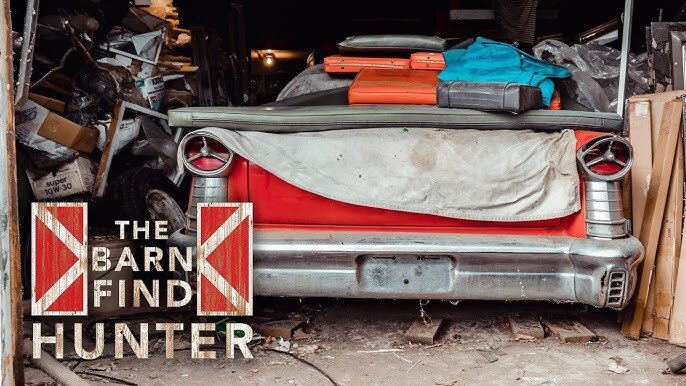
"Barn Find Hunter" with Tom Cotter provides an inside look at the thrill-of-the-chase while hunting classic automobiles.
When it comes to the growth of the United States, from the time the first pilgrim ships landed, there was a desire to move west. Through it all, wheeled transportation was destined to play a huge role. In the early 1800s, places like Ohio were considered to be the West and many made the journey past the eastern Continental Divide to a new land, still east of the Mississippi. In 1810, Margaret Van Horn Dwight described her travels from New Haven, Connecticut to Warren, Ohio. In her diary, she wrote that she believed the reason so few ever returned from the Western country "is not that the country is so good, but because the journey is so bad!" This and other descriptions of the tribulations of transportation in the nineteenth century give us a greater appreciation for the beatings wood wheels took.
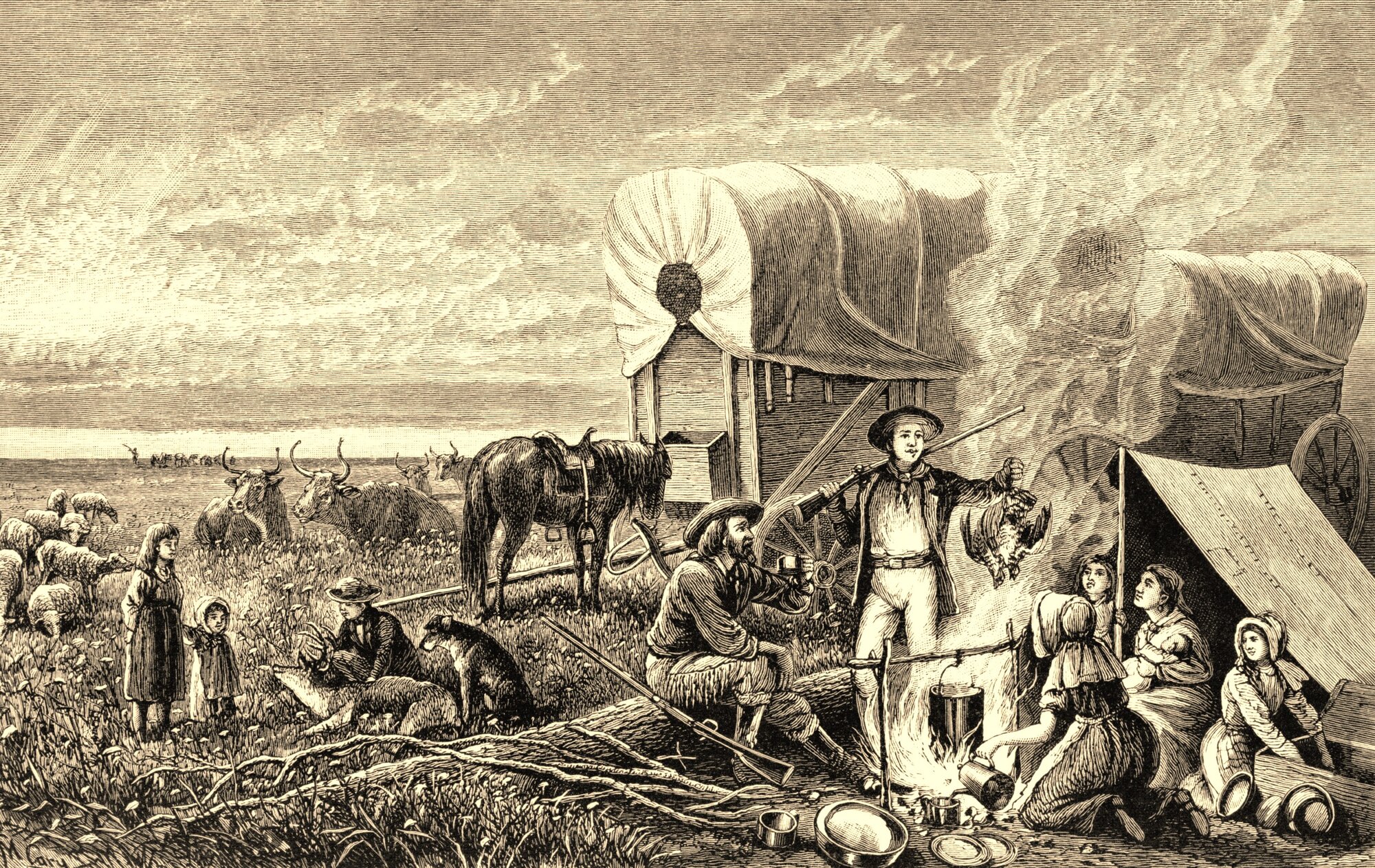
Period publications often romanticized about life in the West. The rugged demands of the beautiful country often ran counter to the idealic descriptions.
From the 1700s through the early 1900s, American wagon designs continually evolved and the business of transportation became a lucrative venture for many. Certain brands grew their prominence, marketing prowess, and distribution to the point that they literally dominated large parts of the western frontier. I wrote about some of these companies over a decade ago (December 10, 2014) in a post entitled, "TheTop Wagon Makers In The West." The story is still accessible in our Blog Archives.
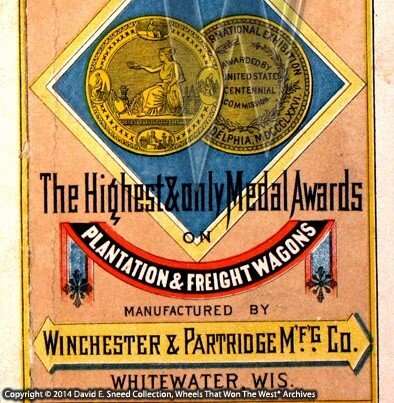
There were multiple 'Whitewater' wagon brands. The one created by Winchester & Partridge (W-P) in the 1870s and 80s was popular on the frontier. While I've seen some surviving 'Whitewater' branded wagons, they were later rebranded pieces and not built by W-P. It's important to know the differences before incorrectly applying a maker to a wagon. Image Copyright © David E. Sneed, All Rights Reserved.
Many of these legacy brands are extraordinarily difficult to find today. Likewise, about any CONFIRMED nineteenth century wagon is among the minority of survivors. The reason I emphasized the word, CONFIRMED, is that the phrase '1800s wagon' is often thrown around more than a lariat at a World Finals roping event. Clearly, not every wagon can live up to the assertion and any brand with decent length to its life will have design distinctions that help identify the time in which it was built. It's the same with the modern auto industry. There are numerous patents, features, and design elements that tend to define most true nineteenth century wagons. Those design traits will vary even more the farther one travels back in time.
The word 'rare' is also commonly heard. The truth is that every one of these wood-wheeled warriors (nineteenth AND early twentieth centuries) carries a significant element of rarity. I mean, you can't just run to the hardware, general store, lumber yard, furniture outlet, or blacksmith shop and pick one out like folks could at one time. With that said, certain brands from the 1800s tend to be rarer than others. Ask yourself when you last saw a true nineteen-century Murphy, Espenschied, Hiram Young, Jackson, LaBelle, Moline, Kansas/Caldwell, Cooper, or Fish Bros. wagon? While you're at it, how many Studebaker, Bain, Schuttler, Mitchell, Winona, Old Hickory, Weber, Mandt, Newton, or Flint labels dating prior to 1900 have you come across? All of these and others were frontier favorites and each has the history to prove it.

One of the rarest wagon brands enjoying popularity on the western frontier was the Kansas wagon. It was made in Leavenworth, Kansas. This graphic is from a rare 1877 promotional flyer in the Wheels That Won The West® collection. Image Copyright © David E. Sneed, All Rights Reserved.
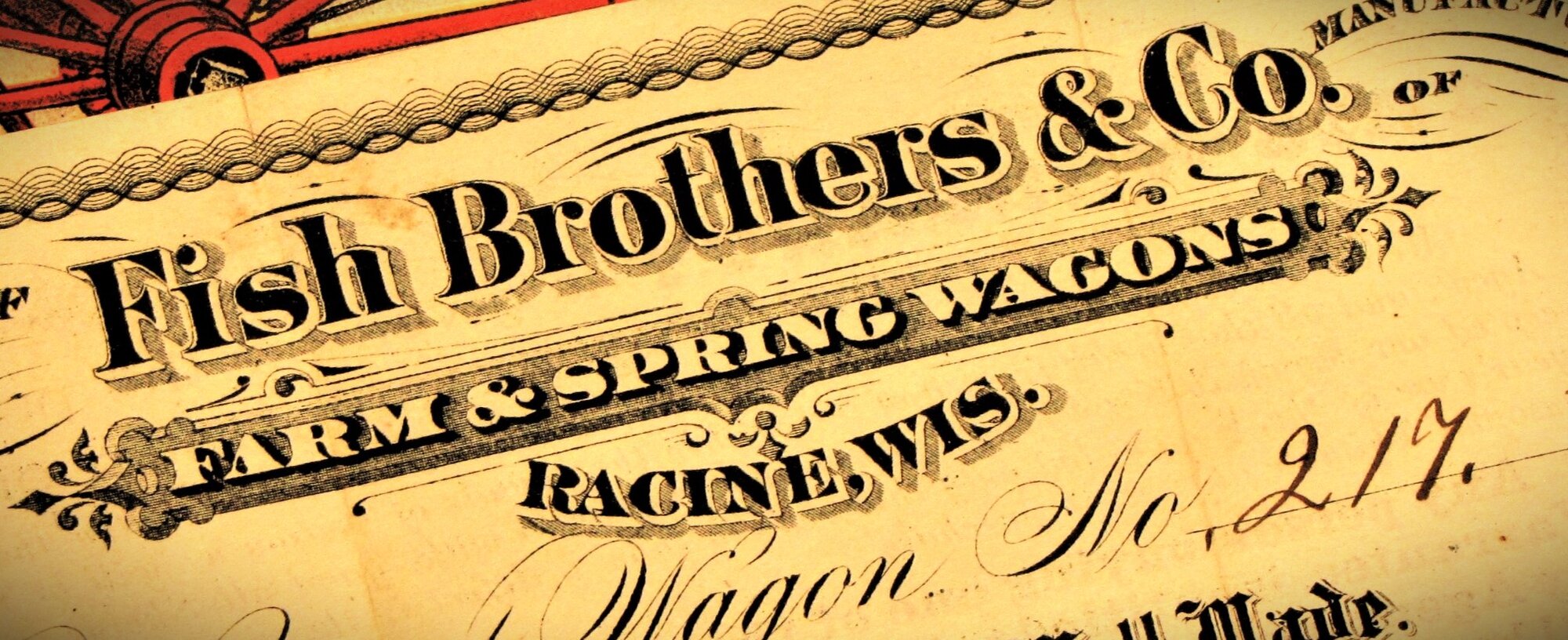
Unfortunately, it's become a challenge to find complete examples of many of the earlier pieces. As a whole, very few of those 1800s wagons have survived and many have NEVER been seen in the twenty-first century. Yet, these were among the preferred wheels on the American frontier. How could hundreds of thousands of wagons carrying these brand names be gone? One reason is the loss of paint and obvious name indicators. Over time, these missing markers tend to visually erase the significance of a vehicle, making it 'seem' like any other generic relic. Therefore, it goes unnoticed and unsaved. Another reason for the disappearance of these rolling icons is a lack of folks seeking them out for preservation. Still another is that many have been left isolated in the weather for generations. That, alone, will reduce a wagon to mulch in just a few years. Regrettably, it leaves us with very few known survivors that will date to the era of the great cattle drives gold rushes, and western stage lines.
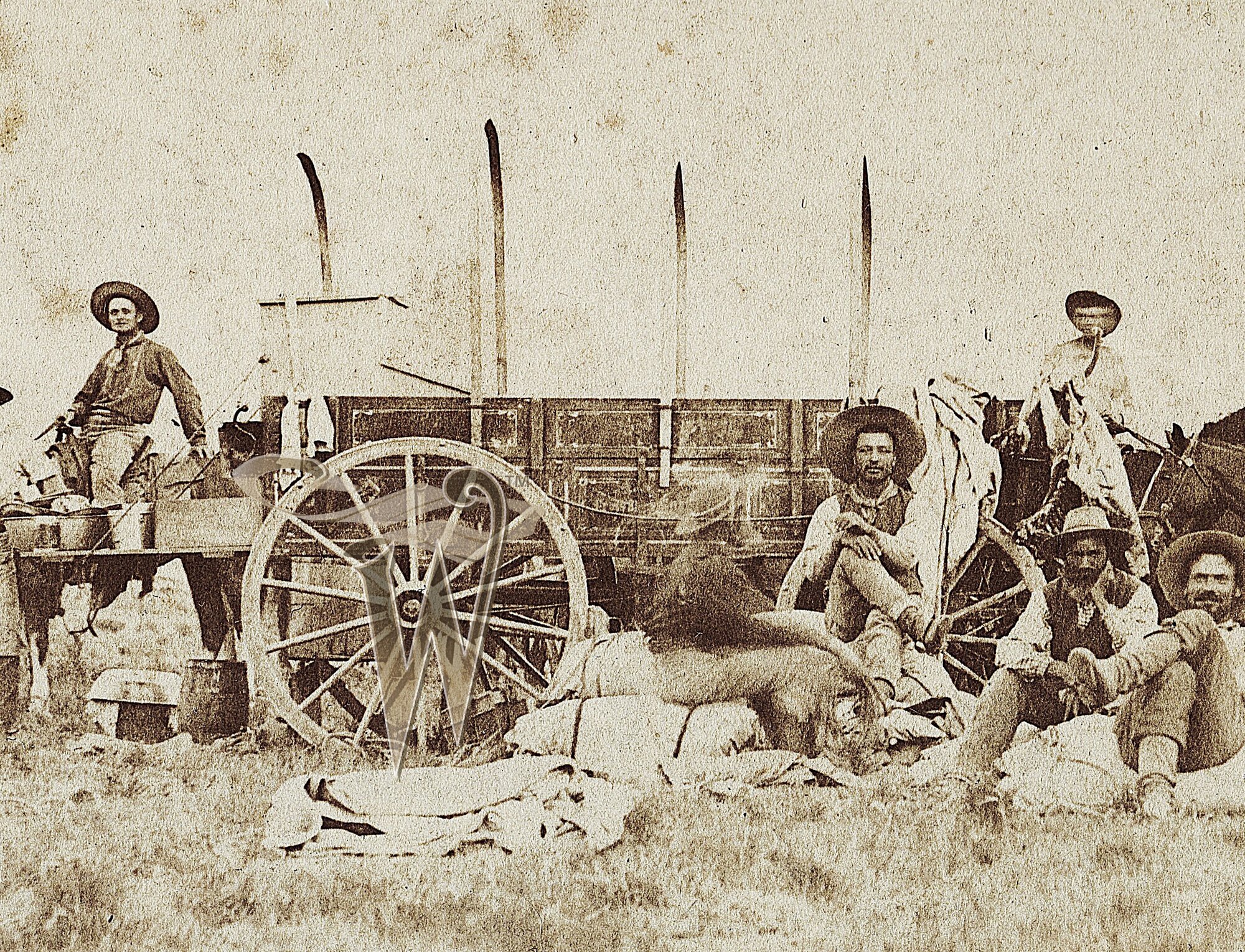
This ultra-rare segment of a period chuck wagon camp is one of countless original images in the Wheels That Won The West® Archives. Image Copyright © David E. Sneed, All Rights Reserved.
Let all of that soak in for a minute. Can you imagine not having an awareness of the legendary brands that have propelled mankind forward and defined history? What if there was nothing but a nameless reference to the plane and people involved in the flight at Kitty Hawk, North Carolina on December 17, 1903 - no makers receiving credit to the vehicle they had built? Clearly, that oversight would be a lack of appropriate recognition for the Wright Brothers. Let's take it even further. What if no foods, beverages, tools, clothing, or anything else had a brand associated with the product?There's an entire study there on why brands have always been important.
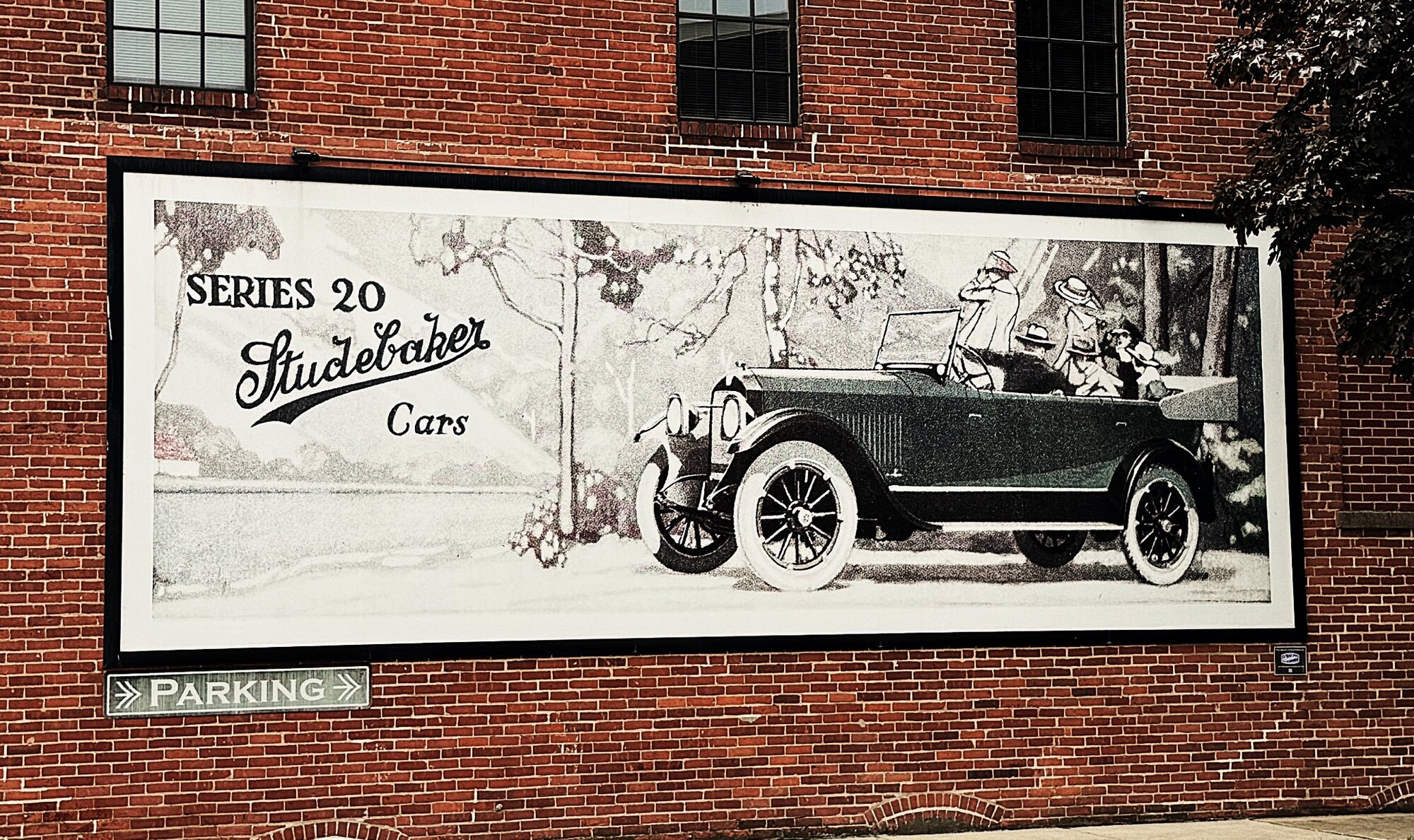
What if America's first automobiles were presented in museums as rudimentary combinations of wood, fabric, rubber, and metal with no profiling of the impact each maker and brand had on the industry and society? Imagine trying to portray the impact that Charles and Frank Duryea, Henry Ford, David Dunbar Buick, Louis Chevrolet, William C. Durant, and the Dodge Brothers all had on transportation without mentioning their names or brands! That's exactly what has occurred with the majority of accomplishments in America's first transportation industry. We can walk into a museum and see examples of freight wagons, farm wagons, and different kinds of business wagons. But, other than Abbot-Downing and their Concord Coaches, I'm not aware of any long-standing, institutional focus on the literal wheeled brands - their business, designs, innovations, competition, and leadership - that played such a strong role on the frontier.
Think about this... How much is added to the Porsche automobile story by having the first known example (1898) of their work on display in Stuttgart, Germany? And how amazing is it to know that this very vehicle was a barn find in 2013! Incredibly, for more than one hundred ten years, it had been tucked away with an entire industry completely oblivious to the history in hiding!
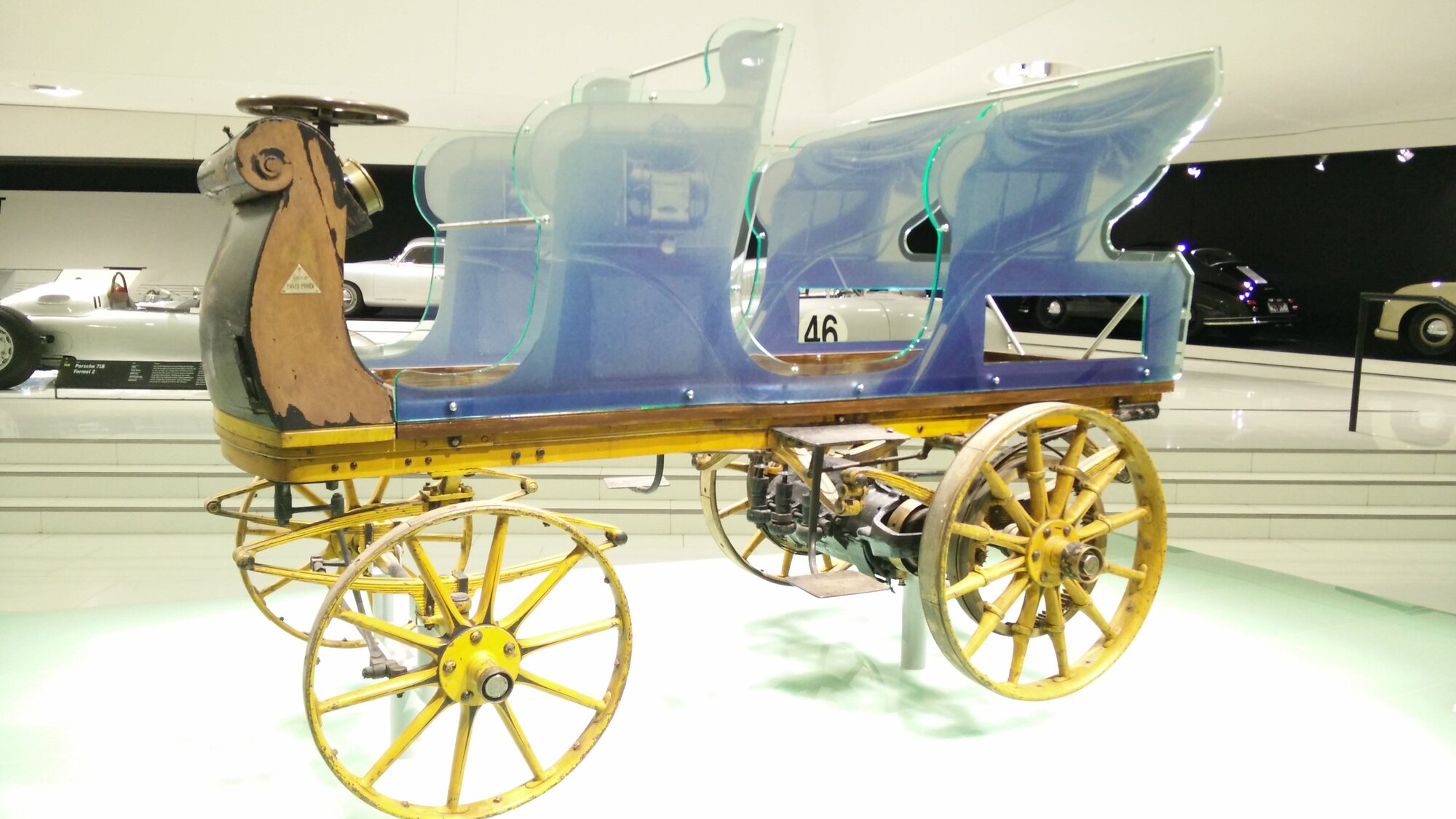
1898 Egger-LohnerC.2 Phaeton... the first Porshe. Image Courtesy Nathanael Burton, Wikimedia Commons.
The exact same challenge is what we face with the wood-wheeled brands that made the opening of the West possible. There are no public exhibits that showcase the emigrant, farm, ranch, and freight wagon BRANDS that dominated the western frontier. To my knowledge, not even the famed Smithsonian in Washington D.C. has ever presented such a display. Yes,many were made by smaller makers but the vast majority of these travelers were crafted by powerhouse brands such as those I mentioned earlier. They overcame incredible odds, taking on the harshest demands and building up businesses that finished a complete vehicle every six minutes - six days a week!. Decade after decade, we've tried to share details of the entire industry while profiling these nomads in our Wheels That Won The West® archives, collection, writings, and presentations.
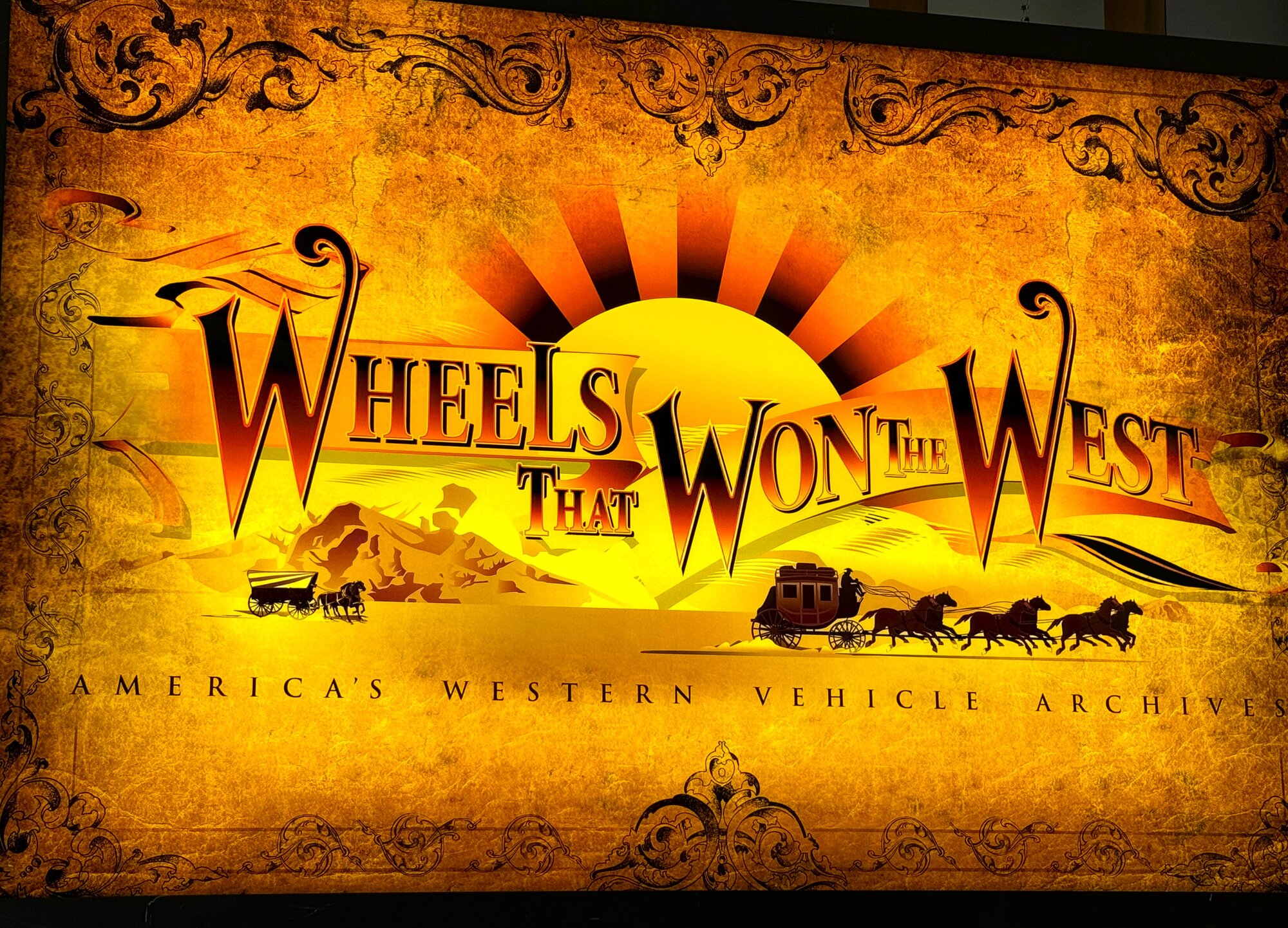
Our Wheels That Won The West® Archves hold a world of ultra-rare documents, period photos, and original wagon and coach maker materials.
Along the way, we've stumbled upon some amazing attic treasures, unbelievable barn finds, and other forgotten pearls from the past. Those dusty letters from legendary St. Louis maker, Joseph Murphy, an 1878 Studebaker uncovered in an old loft, a Cooper from the late 1880s, a nineteenth-century Jackson wagon spring seat, and an 1800s Fish Bros. wagon gear that no one recognized. Each of these, and much more, is what we daily work to preserve and protect for current study and future generations. We never know when the next piece of the puzzle may show up.
I was reminded of the significance of these search and rescue missions as I traveled in the West earlier this year. While at Doug Hansen's shop in Letcher, South Dakota, he showed me literally dozens of extremely rare pieces (nineteenth and early twentieth century). It was good to see so much history as it reminded me that there are still great opportunities for collectors, historians, museums, and even families looking for ways to highlight and preserve their genealogical roots. Even so, the clock is ticking and the losses are climbing.
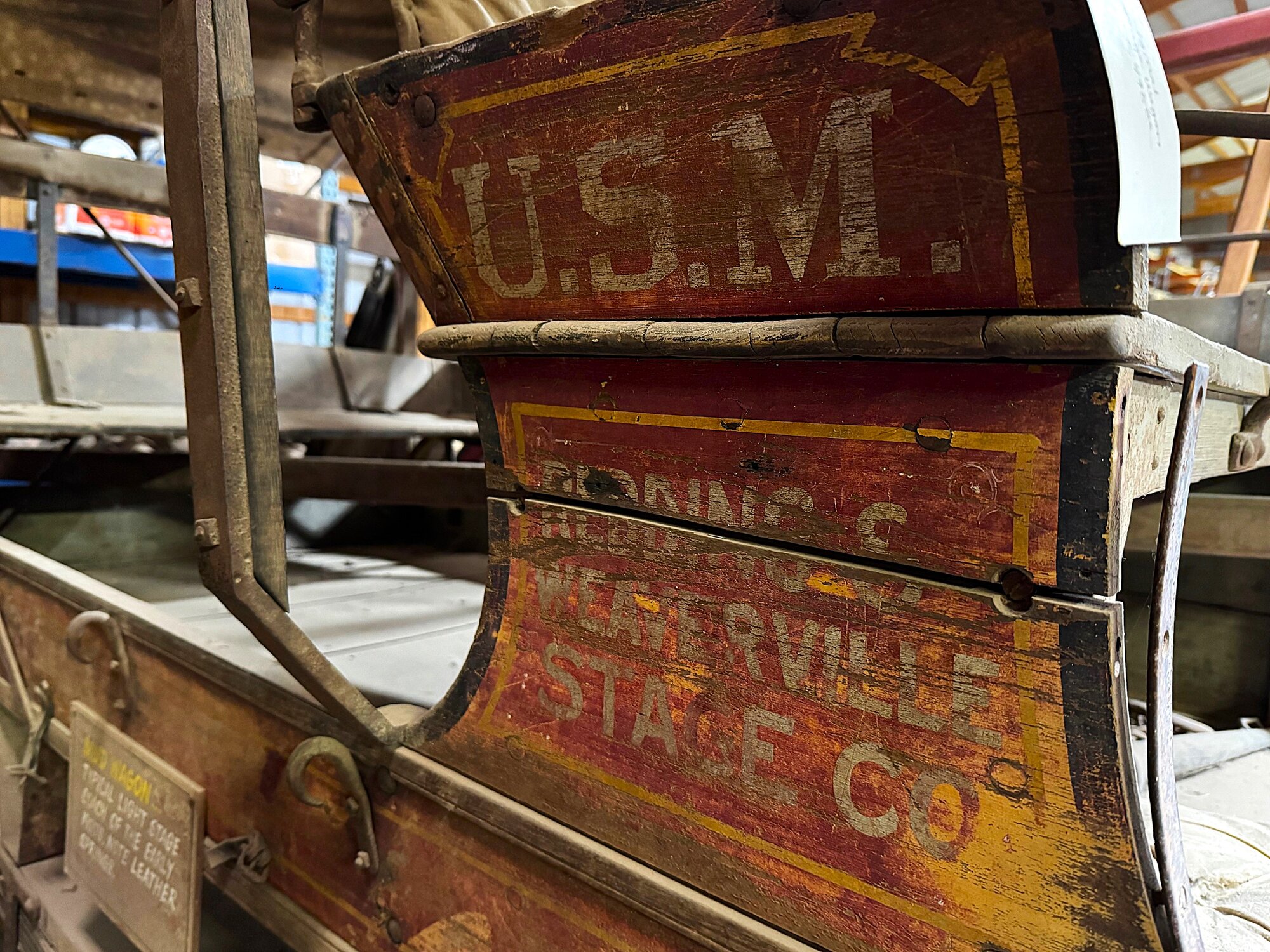
A section of paint on a truly rare, original stage wagon that serviced parts of California. It's just one more part of western history that is available at Hansen Wheel & Wagon Shop in South Dakota. Image Copyright © David E. Sneed, All Rights Reserved.
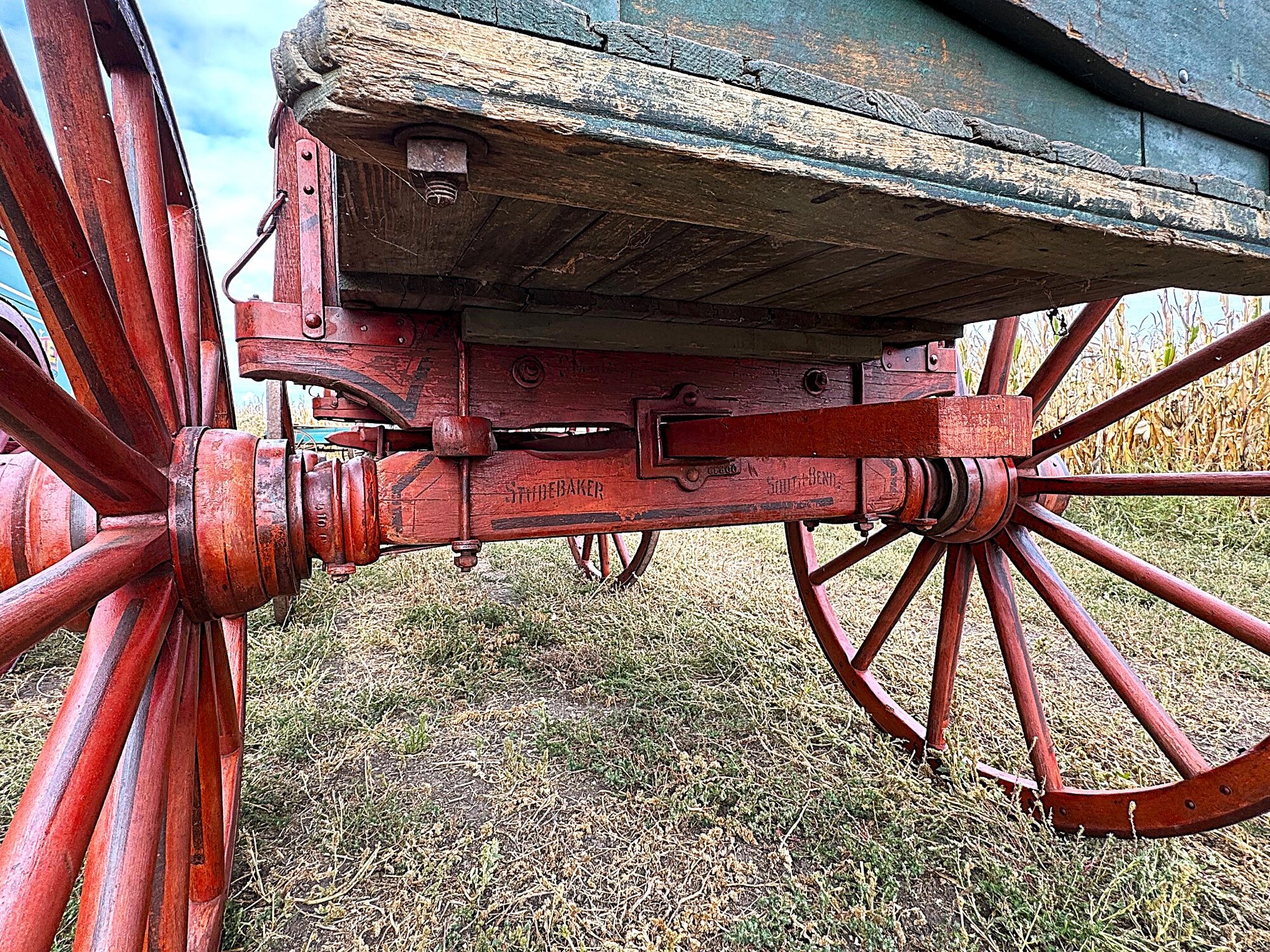
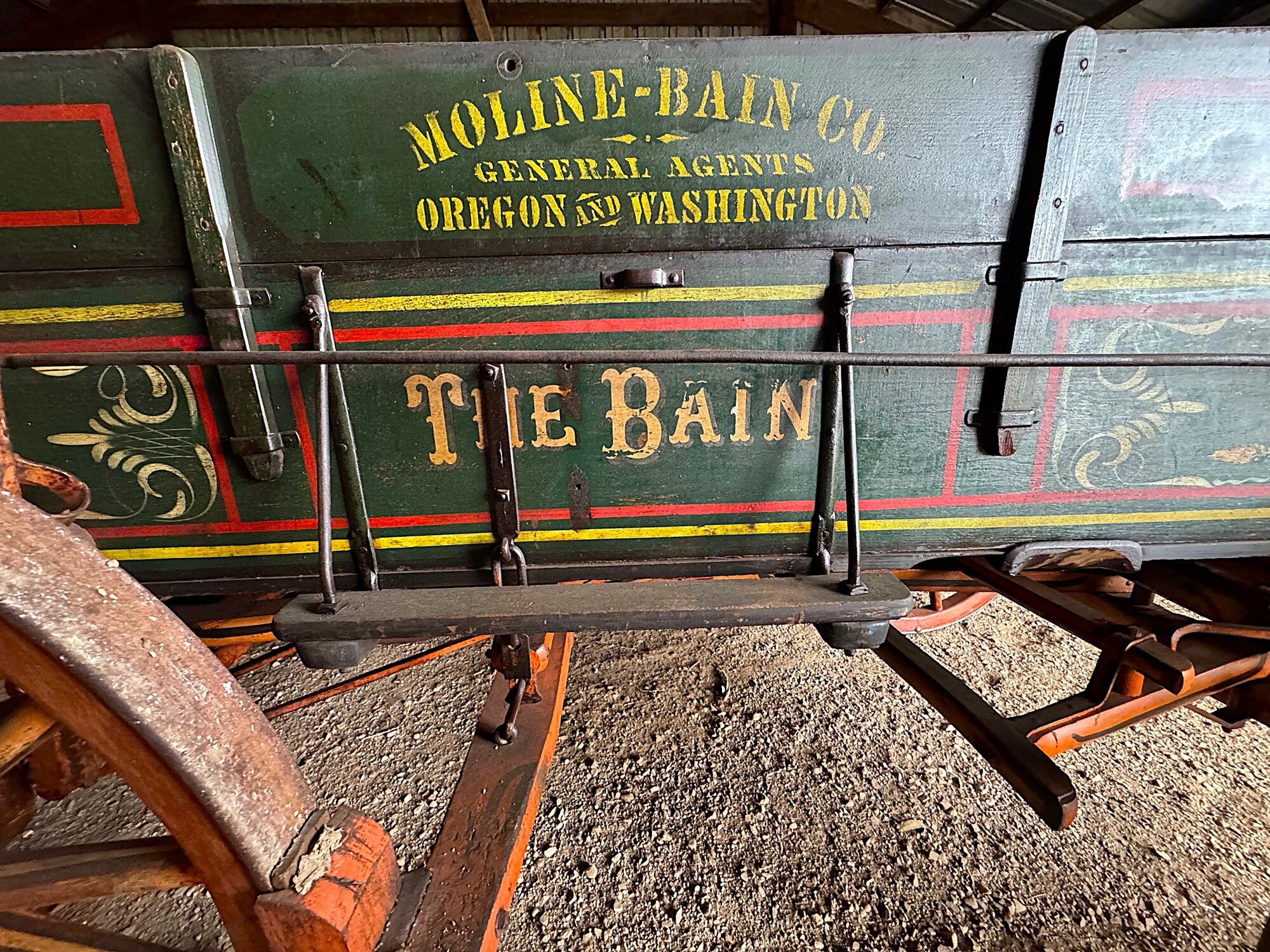
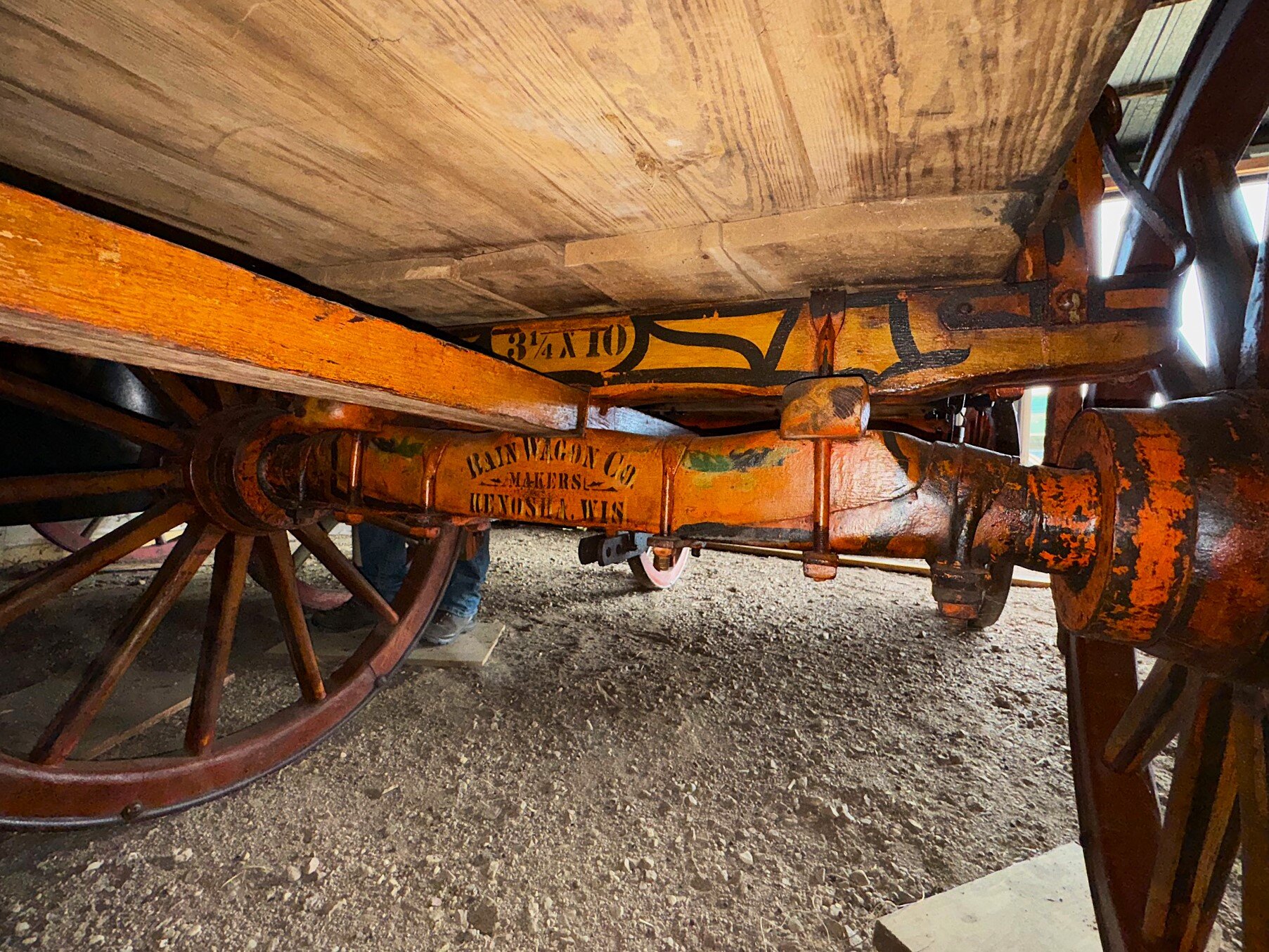
So many stories and so much gem-filled history remains unknown and untold. As a parallel metaphor, I live in a state with an actual surface diamond mine. In fact, it's the only place in the world where the public can search for diamonds still in their original volcanic source. People come from all over creation just to try their luck and, with a fair degree of regularity, they DO uncover multi-carat diamonds in Murfreesboro, Arkansas. The way people find them is ingeniously simple... They LOOK for them.
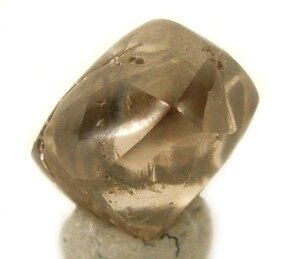
Large diamond from Crater of Diamonds, Murfreesboro, Arkansas. Image Courtesy of Rob Lavinsky, iRocks.com, Wiki Commons.
It's the same with the rarest of wheeled history. Unless there is an active and focused search, though, the chances of discovering something are minimal. Still, there are historical diamonds on wheels out there. However, those western transportation brands that were so revered by pioneers, freighters, stage lines, businesses, farmers, ranchers, and the military are rapidly disappearing. Owning a piece of that history is akin to finding one of those special diamonds in Murfreesboro. It's an incredible feeling to unveil valuable parts of the past and it might just be a part of the Old West you can help save.
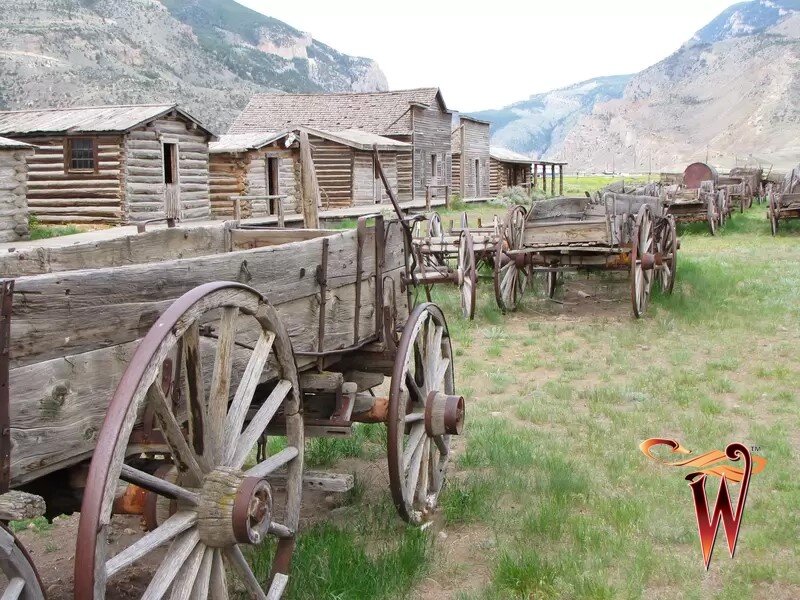
Early wagons at Old Trail Town in Cody, Wyoming. Image Copyright © David E. Sneed, All Rights Reserved.
Here's something to consider; as you travel, keep your eyes open and take multiple, hi-resolution photos of old wagons you come across (with or without brand names on the sides of the box or front/rear axles). Write down the location or put a GPS pin on the spot where you saw the piece. Feel free to keep the locale to yourself but, send us an email with as many detailed images of the whole and individual parts as possible. We'd love to see what you're seeing and help identify what might be an especially significant set of wheels. This much is for certain... somewhere, maybe in your neck of the woods or your next hike down the highway, is a part of the Old West that deserves to be saved and have its story told. We would enjoy the privilege of helping you share that discovery. After all, next year (2026) will be the 250th Anniversary of the founding of the United States. What a tremendous tribute it would be to identify some of these lost parts of western history... brands that didn't just travel the frontier, they embraced the spirit of freedom and became an iconic reminder of The Power of Dreams in a land of opportunity.
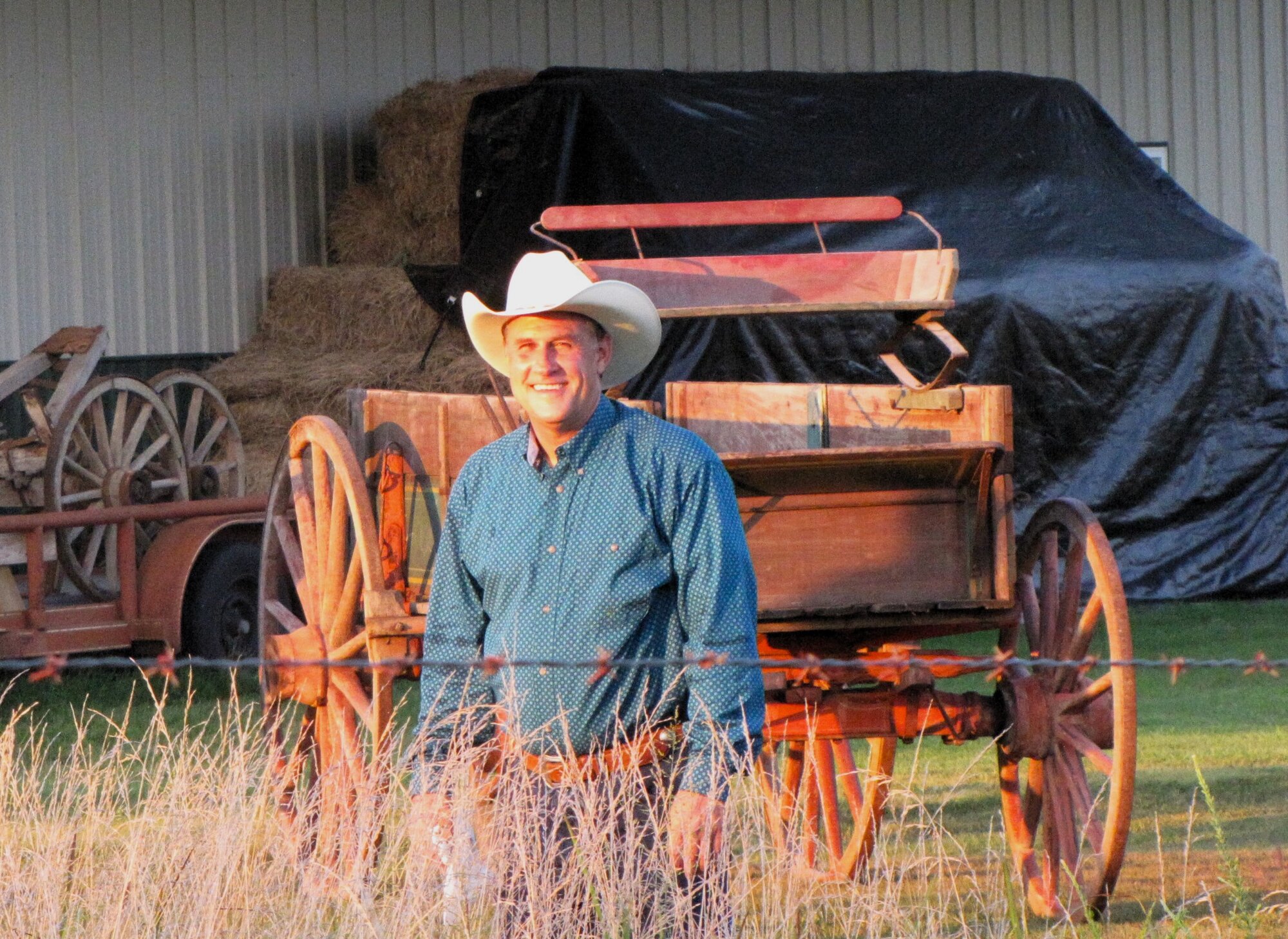
Psalm 20:7